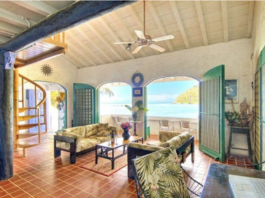Why you Need an Outdoor Makeover, Benefits of Outdoor Living
An outdoor living space is a great way to make your home feel more like a home. It’s also an opportunity to add some personality and creativity to your yard. There are many benefits of outdoor living, but the most important one is that it’s a perfect space for entertaining! Interior designer, Perla Lichi explains, “While older clients love nostalgic surroundings, and younger people like minimalism, what every patio needs can be explained in one word—character,” she affirms. “The outdoor look needs to be an extension of the existing spaces of your interior, from furnishings to colors, lighting and accessories. Also, based on the climate of where your home is based, you need to pick outdoor fabrics that will withstand sun, rain and others elements even as it visually matches up to your interiors.”
Outdoor Living Style Guide & Considerations for Your Patio
An outdoor room is a space that you can enjoy all year round. It’s a place where you can have a barbecue, eat breakfast, or just relax and unwind after work.
“When creating or rethinking your patio, the first thing to consider is the square footage and shape,” says Lichi. “A good floor plan for your outdoor space is essential because scale and proportion will inform what furniture and décor will work and how the various pieces should be arranged. There also needs to be flow between the outdoors and the indoor space adjoining the patio. Once we establish the floor plan based on the size and shape of the outdoor space, we then set out to create what I’m going to call it the flavor of the space. Finding the right flavor or style of the outdoor space involves connecting it to what’s happening in the indoor interior.”
Using Your Travels in Planning Your Outdoor Space
Your travels might have provided you with some good ideas of what your outdoor space should look like. You may also want to think outside the box and be inspired by spaces in other countries.
For example, Lichi says “Mediterranean outdoor design has a history (as well as) evocations of comfort,” she details. “When you travel to those areas and look around, your eyes will be drawn to the history and character of all those architectural and interior design details (of the destination). The outdoor dining culture is strong, especially along the Mediterranean, and the first thing travelers notice when they get to the destination is that there are a lot of people dining outside. A lot of my clients want to take memories of past travels and bring all of that history, color and flavor into their lifestyle at home. While modern patio design is great, and there are a lot of beautiful contemporary pieces, what makes a patio appealing is that personalized mix of history and culture that entices one to spend more time outside.”
Utilizing Design Professionals vs. DIY when designing your patio
Designing a patio can be a daunting task. When you have more than one person in the household that has an opinion on how it should look, it can be difficult to make everyone happy. With a DIY approach, you are the one in charge of everything. You have to decide on the layout and materials to use for your patio, as well as take care of any landscaping or gardening that needs to be done.
On the other hand, if you hire a design professional, they will do all of this for you. They will come up with an outdoor living space design that suits your needs and wants, and then execute it for you. You’ll get an expert opinion on what materials work best for your area, and they will handle all the hard work of measuring and ordering materials so that they are delivered right when needed.
“Most of the clients are not trained in design as professional space planners and designers need to be,” she says. “They’re not trained to see the big picture in terms of scale or proportion, or how individual elements tie together. When they try to pull different things together without that perspective, the result may not end up being how they envisioned it. It is my job to explain how elements they like will work best together and how to reconcile the things and ideas they love with the reality of the space’s size and dimensions. Design itself is like art, as everybody has his or her own ideas of what makes it good. Allowing a professional to put it together is what can differentiate something that’s nice and something that’s beautiful.”
Field Guide: Perla Lichi’s patio planning checklist
- An itemized budget is important, as it helps the designer determine how much should be spent on the visible furnishings, accents, safety features and extra “bells and whistles” (such as outdoor kitchen appliances or a sound system) to make the patio as inviting as any other room in the house.
- Determine what the patio will be used for. Will it be used for quiet reflection, the whole family’s use or full-on entertaining? How do you define entertaining? Will it be casual, formal or somewhere in between?
- As many homes have kitchens or living rooms with large windows or sliding glass doors looking out into the patio (and vice versa), take into consideration what furnishings, fabrics and colors should be incorporated to ensure there is a visual flow between the outdoors and indoors.
- While you should have questions and concerns ready for your designer, be prepared for him or her to ask you questions about your vision for the space as well as suggestions about what will work best based on his or her professional training.
- Even with accents and colors that connect the interior to the exterior of the home, the overall outdoor color scheme needs to work with the climate. If you are in a bright, sunny region, avoid using very dark colors as they absorb the sun and make the floor hard to walk on and the space overheat. Fresh cool colors will ultimately make the environment cooler and more comfortable.
- The floors should be non-skid. Even if you don’t have a pool, the floor can get wet with rain or spilled liquids.
- Consider the landscaping around your home and neighboring homes during the planning so your space will blend fluidly into the neighboring surroundings.




